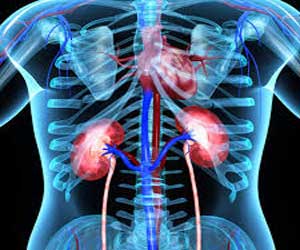- Home
- Editorial
- News
- Practice Guidelines
- Anesthesiology Guidelines
- Cancer Guidelines
- Cardiac Sciences Guidelines
- Critical Care Guidelines
- Dentistry Guidelines
- Dermatology Guidelines
- Diabetes and Endo Guidelines
- Diagnostics Guidelines
- ENT Guidelines
- Featured Practice Guidelines
- Gastroenterology Guidelines
- Geriatrics Guidelines
- Medicine Guidelines
- Nephrology Guidelines
- Neurosciences Guidelines
- Obs and Gynae Guidelines
- Ophthalmology Guidelines
- Orthopaedics Guidelines
- Paediatrics Guidelines
- Psychiatry Guidelines
- Pulmonology Guidelines
- Radiology Guidelines
- Surgery Guidelines
- Urology Guidelines
IIT Researchers develop New test to detect early albuminuria

Shimla: IIT Researchers at Mandi have developed New test to detect early albuminuria. The test is useful in detecting early signs of kidney damage by measuring even low levels of a protein marker in urine and blood samples. The test, which detects the presence of protein albumin in urine and blood, can serve as an early indicator of various health disorders such as renal dysfunction as well as diseases that result from diabetes.
At present, dipstick tests are available in the market to detect albumin in urine.
However, analysing microalbuminuria -- a condition in which kidney leaks small amounts of albumin into the urine -- and other nephritic disorders in their early stages is difficult using these tests.
"The urine dipsticks available in the market can correctly estimate albumin concentration in urine up to 30 microgrammes per decilitre (mg/dL), whereas with our technique one can measure levels as low as 3.3 mg/dL," Shubhajit Roy Chowdhury, an assistant professor at Indian Institute of Technology (IIT) Mandi, told.
The system compromises of a chamber that accepts urine or blood serum and a fluorescent dye.
The dye, which we developed at IIT Mandi, binds with the albumin molecules in the urine. This composite then absorbs near infra-red (NIR) radiation of 740-nanometer wavelength, and emits radiation at an 806-nanometre wavelength," Roy Chowdhury said.
A spectroscopic analysis can then reveal albumin concentration in the sample, he said.
"We have conducted a clinical trial with 15 patients, with promising results," Roy Chowdhury said.
Now, the team is set to conduct a more extensive trial over the next five to six months on a range of patients to understand how the performs for different types of disorders.
It will be the first device which has the potential to detect and quantify urinary albumin through the enrichment of the fluorescent signal, the researchers said.
The project, jointly funded by the Ministry of Human Resource Development and Indian Council of Medical Research, would help detect many health disorders in premature phase.
"The cost of doing the test will come down to below 30 rupees. At present, while the dipsticks are not very costly, the device to analyse the results may cost up to a few lakhs.
"We are instead using a portable, hand-held gadget that will be worth 3,000 rupees or so," Roy Chowdhury said.

Disclaimer: This site is primarily intended for healthcare professionals. Any content/information on this website does not replace the advice of medical and/or health professionals and should not be construed as medical/diagnostic advice/endorsement or prescription. Use of this site is subject to our terms of use, privacy policy, advertisement policy. © 2020 Minerva Medical Treatment Pvt Ltd